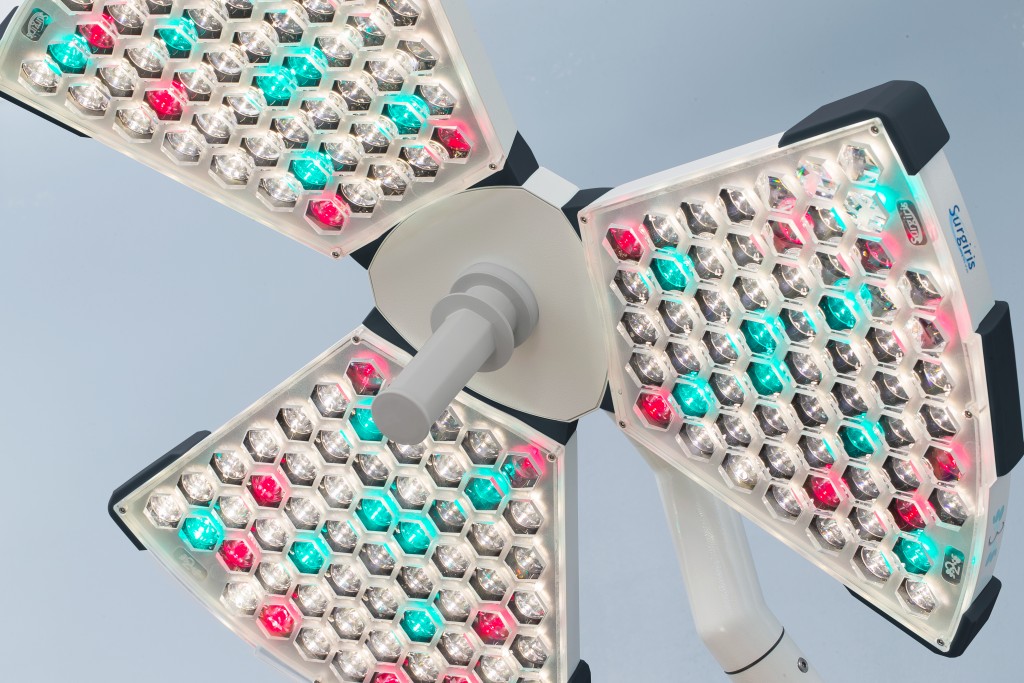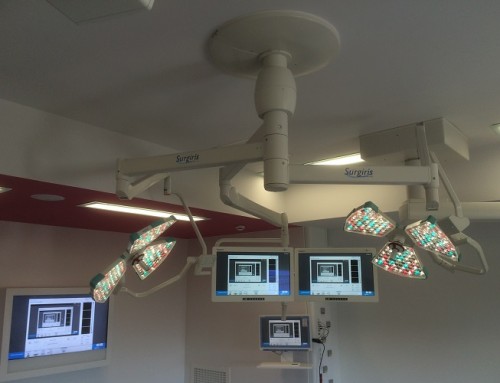Previously, Halogen light were considered a gold standard in medical facilities and operating rooms. However, its light contains many disadvantages and has become a challenge for medical teams in terms of heat dissipation, high energy consumption, bulb life etc.
In the past few years, medical profession has seen great progress in the field of lighting. LED (Lighting Emitting Diode) technology has transformed from new and unique features into an essential part of operating rooms, such as controlling light temperature, enhancing lighting intensity, increasing bulb life, etc. And there are many other reasons that persuade us to upgrade from Halogen to LED light. So, in this article, we will analyze the differences between Halogen and LED light for more detail.
The definitions of Halogen and LED light
Halogen light
Halogen is constructed and operated like an incandescent light bulb. In the center of the bulb, there is a Vonfram wire wrapped inside a small bulb with a mixture of inert gas and a small amount of halogen like iodine or Br. When electricity is applied to the filament, the filament glows (the same principle as incandescent light bulbs), the more electricity is pushed into the filament, the brighter the light bulb and whiter. Also, the brighter the light is, the more heat the halogen bulb emits.
LED light
“LED” is an acronym for Light-Emitting-Diode, meaning light-emitting diode. LED technology is based on a single semiconductor inside a glass or plastic housing. When electricity is applied, the electrons are active enough to generate energy in the form of light. Like a halogen bulb, the more electricity an LED receives, the brighter light is.
What is the difference?
Illumination Intensity
Lux is the measurement of the amount of light reaching a surface per square meter, and this is usually measured at a distance of 1m for surgical light. Halogen surgical light can produce approximately 90,000 lux illumination and good LED surgical light can produce 120,000 lux of illumination.
Some Surgiris surgical light such as EPURE, X2 & X3 MT have a light intensity of up to 160,000 Lux to ensure the best light source for surgery.

Color Variation
Color variation is the ability of right color light display for doctors and surgeons to ensure accurate diagnosis and treatment. If the medical light changes the true color of tissue, it increases the risk of misdiagnosis of the disease.
If natural daylight is measured at 5100K, a Halogen light would produce a white light close to natural light, averaging 4000K. Compared to its competitors, the LED light takes it to a higher level, even close to a natural light source of 4300K.
In particular, Surgiris’ X2 & X3 MT surgical light have a color temperature of up to 5000K.

Temperature
LED bulbs are composed of semiconductor diodes, which produce cold light. The absorbed energy is mainly converted to light, so it produces little heat. This helps to increase bulb life and improve working efficiency.
Halogen bulbs often generate a lot of heat during their light-emitting process, which can injure us to the touch and cause them to explode. In particular, according to some surgeons, working under a halogen light environment often does not feel comfortable, because the Halogen bulb causes a hot feeling, makes the wound easy to dry, causes eye fatigue, pouring, sweating and distracting during surgery.
Color Rendering Index (CRI)
Color rendering index is an important parameter of a surgical light. The reference CRI is 100 natural light. The light has a good color rendering index with a CRI above 90. Halogen and LED surgical light can produce CRI 95-97, and LEDs are usually slightly higher than Halogen.
The X2 & X3 MT surgical light have a color rendering index of up to 99 asymptotic to the standard light level, helping to ensure the illumination process.

Power consumption (Energy usage)
LEDs consume less power than Halogen up to 50% -70%. Also, because LED light reduces the number of lights in landfills and uses less energy, it is considered a “green” technology.
Life time
LEDs have a longer service life than Halogen. The average lifespan of a Halogen light is 1500-2000h, while the average life of an LED light is 20,000-50,000h.
With Surgiris’ examination, minor surgery and surgery lights, the life time is up to 60,000 hours.
Price
The initial investment cost of LEDs is usually more expensive than Halogen. However, LEDs have an energy saving system that saves up to 30 times lower energy consumption than halogen lamps, thereby increasing life time and reducing maintenance costs. Therefore, LEDs still have more economic benefits. compared with Halogen.
Design flexibility
LEDs can be easily configured based on different requirements, making them versatile and easy to install.
Other benefits of the LED lighting system include flexible dimming options. Some lights have up to five different settings for the intensity of the lights.
TNT Medical is proud to be selected as the distributor of Surgiris examination light, surgical light and LED light from France. If you need any support about these products, please contact us for more information.





Leave A Comment